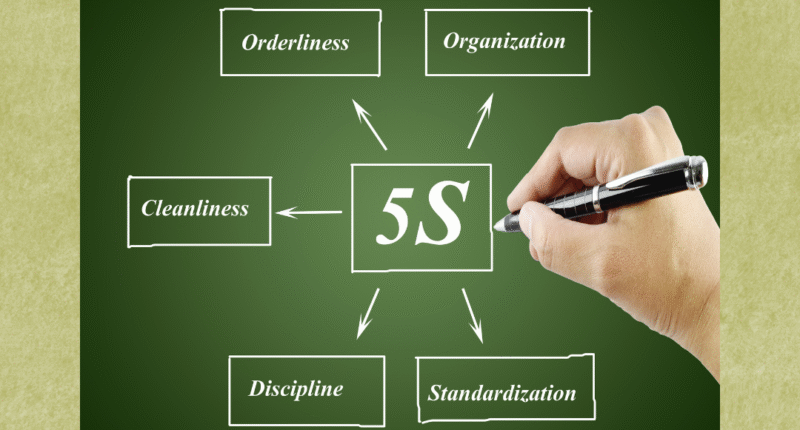The 5S system — Sort, Set in Order, Shine, Standardize, and Sustain — is a powerful Lean tool for improving workplace organization and efficiency. But implementing 5S is only the beginning; maintaining its success requires regular 5S audits.
A 5S audit helps ensure that improvements remain consistent over time, allowing organizations to sustain discipline, safety, and productivity. Below are the top five benefits of conducting a 5S audit, with simple real-world examples to show how it works in practice.
1. Improved Workplace Organization and Efficiency
A 5S audit ensures that everything in the workplace is organized and in its proper place. This leads to smoother workflows, reduced searching time, and higher overall efficiency.
Example:
In a small automotive workshop, technicians often wasted time searching for tools. After conducting regular 5S audits, they introduced tool shadow boards and labeled storage drawers. Tool retrieval time dropped by 40%, allowing technicians to complete more jobs per day.
Why it matters:
An organized workplace saves time, reduces motion waste, and increases productivity — all key elements of operational excellence.
2. Enhanced Workplace Safety
Safety is a direct outcome of good housekeeping and organization. A 5S audit identifies potential hazards — such as blocked aisles, spills, or misplaced tools — and ensures corrective actions are taken immediately.
Example:
A food processing company’s 5S audit revealed electrical cables lying across walkways. By rerouting them and marking safe paths, they reduced tripping incidents and improved safety compliance.
Why it matters:
Safer workplaces reduce accidents, downtime, and costs, while promoting employee confidence and morale.
3. Higher Product and Service Quality
Clutter and disorganization often lead to mistakes, defects, and rework. A 5S audit helps maintain process consistency, improving product quality and reliability.
Example:
A printing shop found frequent color mismatches in printed materials. Through 5S auditing, they standardized ink storage and cleaning procedures. The result was a 15% reduction in printing errors and improved customer satisfaction.
Why it matters:
Standardized and clean work environments lead to fewer defects and higher-quality output — essential for long-term business success.
4. Stronger Employee Engagement and Accountability
A 5S audit encourages team participation by involving employees in evaluating their own work areas. When employees take ownership of their workspace, they naturally become more disciplined and engaged.
Example:
A logistics warehouse introduced a “5S Champion” award after each monthly audit. Employees competed to keep their areas organized, resulting in a cleaner facility and a 20% boost in team morale.
Why it matters:
Recognition and involvement make employees active contributors to continuous improvement rather than passive participants.
5. Sustained Continuous Improvement
Perhaps the greatest benefit of a 5S audit is its ability to sustain improvement over time. Regular audits prevent the workplace from slipping back into disorder and encourage ongoing innovation.
Example:
A medical equipment factory found that performance began to drop months after initial 5S implementation. Once monthly audits were introduced, compliance stabilized, and new improvement ideas emerged during every review cycle.
Why it matters:
5S audits help organizations maintain momentum, ensuring that improvements become habits rather than short-term projects.
Conclusion
Conducting regular 5S audits is essential for maintaining operational excellence. From improving efficiency and safety to enhancing quality and employee engagement, these audits keep the workplace disciplined, organized, and continuously improving.
In today’s competitive environment, 5S auditing is not just about cleanliness — it’s about building a culture of excellence that delivers lasting value.









